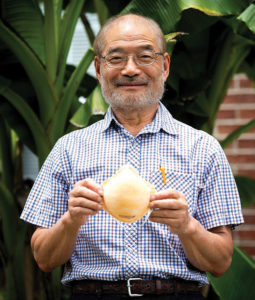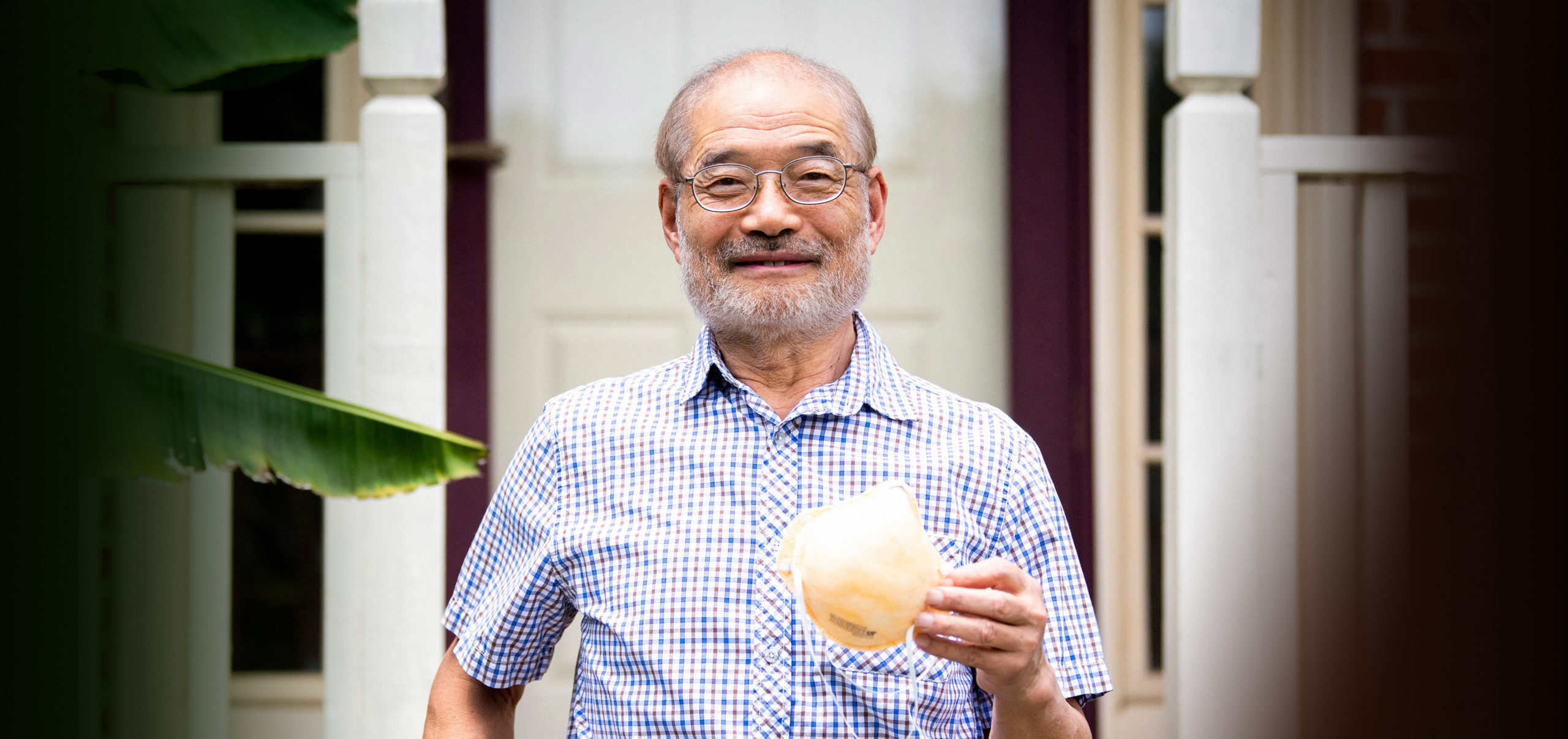By Jennifer Sicking
When Peter Tsai was told he should win the Nobel Prize, he laughed.
“I already won the ‘No Belly’ prize,” he says.
After all, coming out of two years of retirement to work long hours on one of his inventions caused him to lose 10 pounds.
Tsai, a former UT Knoxville materials science professor, developed the microfiber materials used in the respirator known as N95, which became the letter and numeral voiced across the world this spring. N means non-resistant to oil, and 95 means 95 percent effective. N95 masks fit tightly to the face and block most particles.
In 1992, Tsai invented corona-charging technology to use an electrical field to charge materials, giving them a higher efficiency. By charging the microfibers, the particle-filtering efficiency improved 10 times. Through the UT Research Foundation, it was licensed to companies and has been used to make the media for a new respirator issued in 1995. Since then he continued to work on improving methods, eventually developing a water-charging method in 2018 that increased the respirator’s efficiency by 20 percent from the uncharged method.
“It doesn’t just happen,” Tsai says about advances in science and technology. “Edison failed 1,006 times before he invented the light bulb.”
Originally made for construction workers, who use it to keep from breathing in dirt and dust during construction, the N95 respirator also proved effective in the medical realm, with its charged materials helping to capture moist droplets. In 1996, the Centers for Disease Control and Prevention (CDC) recommended the respirator for airborne diseases.
The CDC recommended the N95 again in 2003 during the Severe Acute Respiratory Syndrome outbreak, in 2007 for the bird flu, in 2009 for the swine flu and in 2013 for Middle East respiratory syndrome (MERS). None of those outbreaks reached the pandemic level of COVID-19.
With a severe shortage of respirators and masks this spring, doctors and other scientists turned to Tsai, asking about the possibility of sterilizing the respirators to reuse them. But how could they maintain the microfibers’ electrical charge essential for trapping droplets?

Tsai came out of retirement and, with his 35 years of experience, went back to work on his creation.
Alcohol caused the materials to lose their charge. Some temperatures caused the mask to warp. But eventually he found that 70 degrees Celsius (158 degrees Fahrenheit) allowed the mask to keep its charge and not lose it shape. Virologists at the CDC found that temperature for 60 minutes killed the COVID-19 virus.
For Tsai, it was a way he could help fight against the virus.
“The invention is not special,” he says. “It’s just a special time. I’ll have this memory for the rest of my life that I helped the different communities.”



